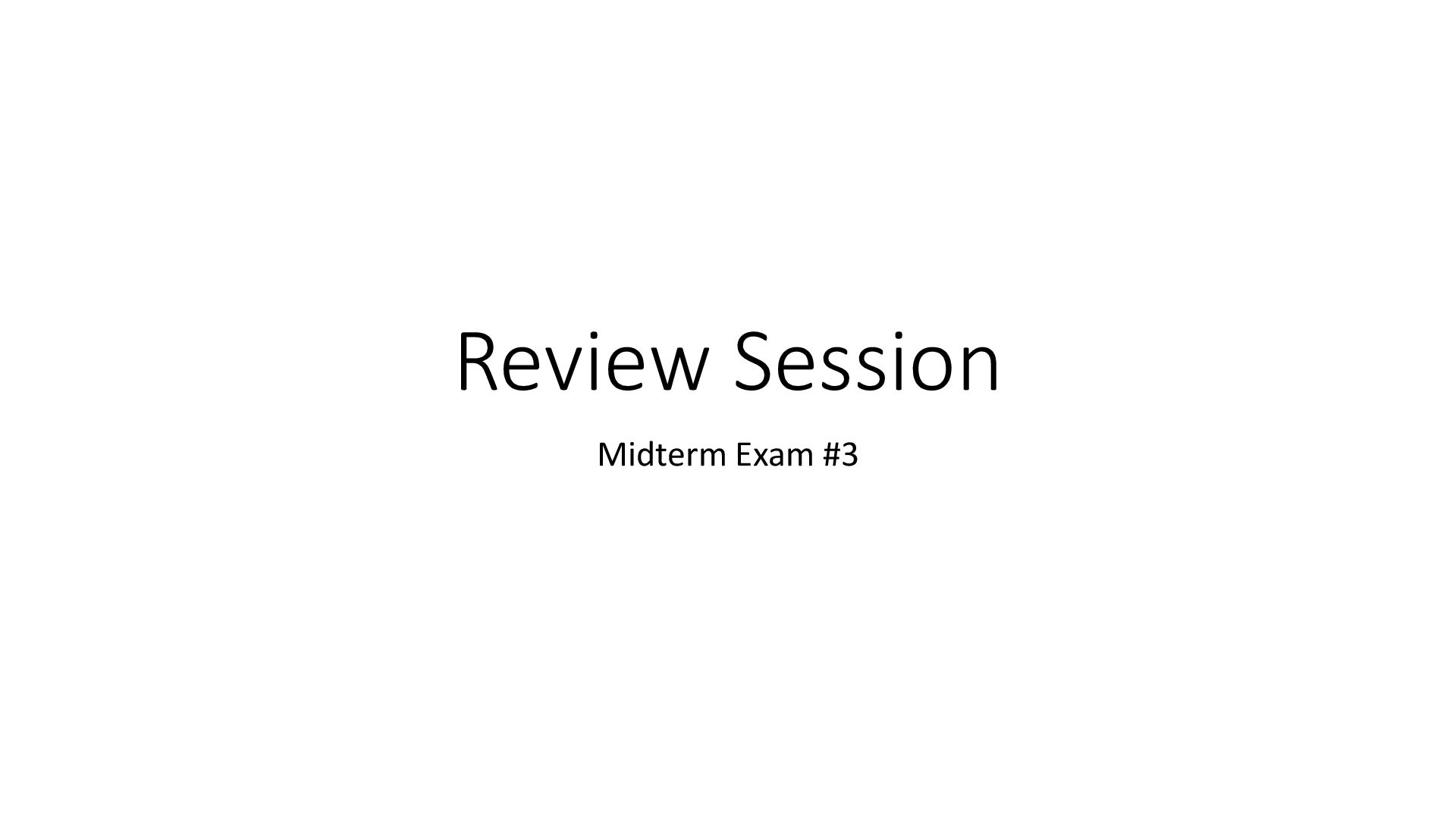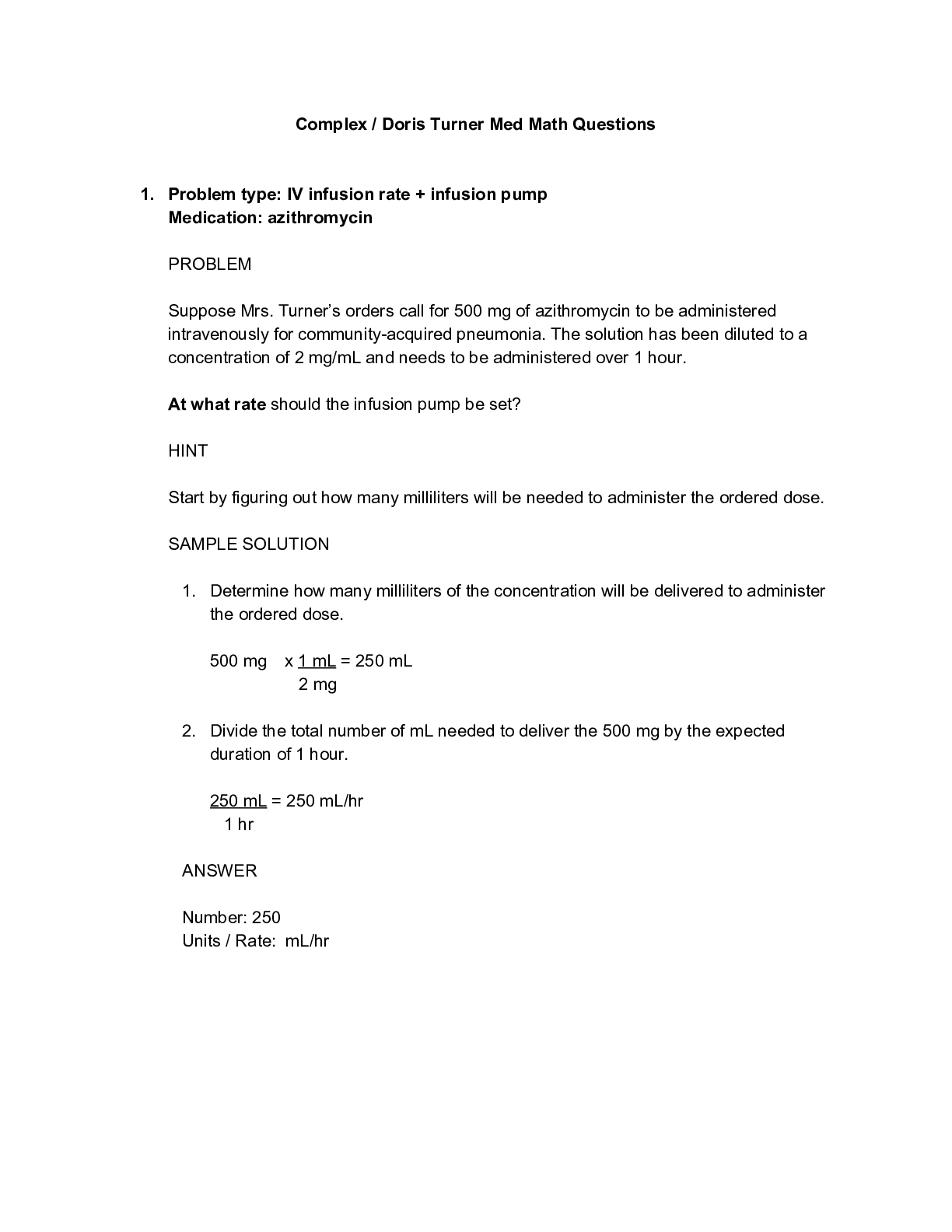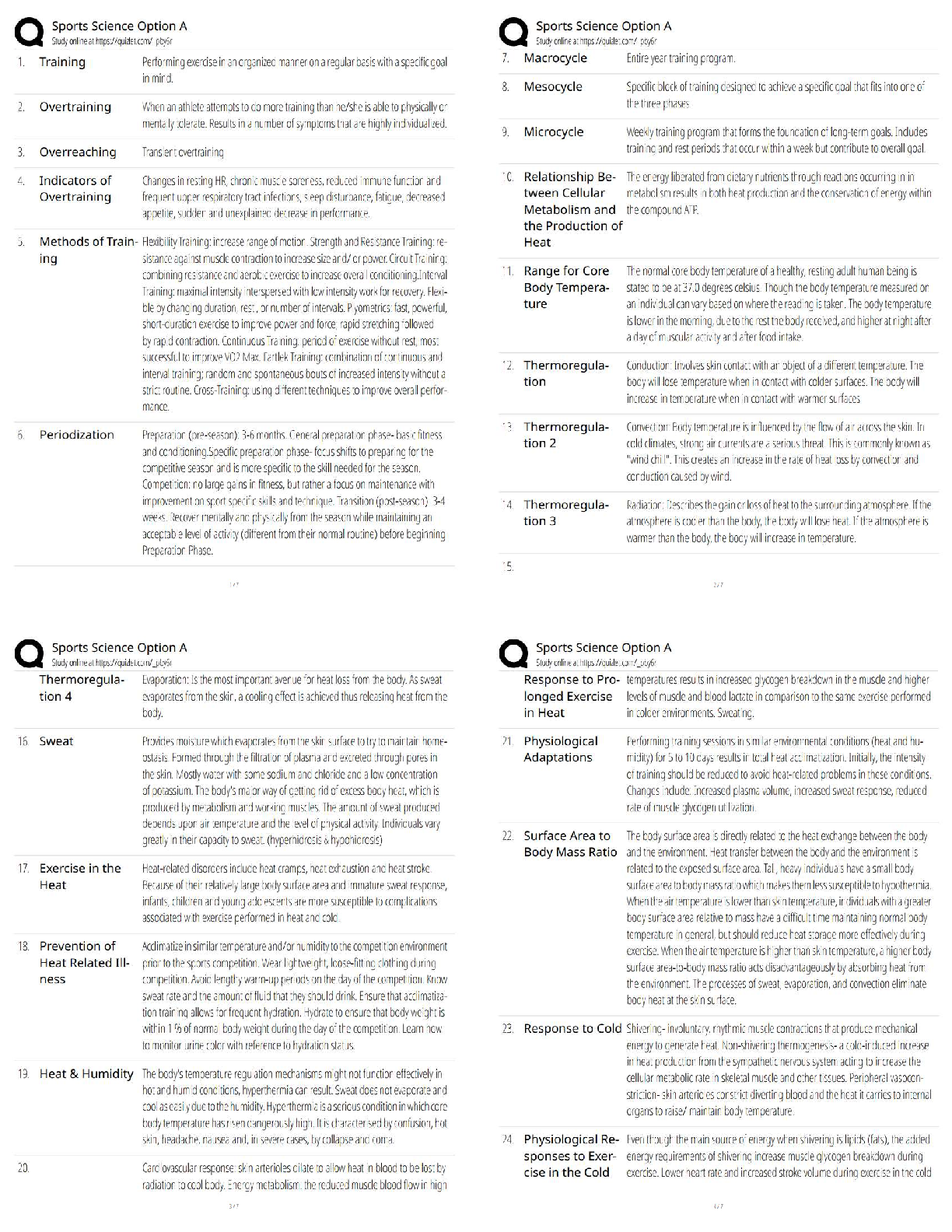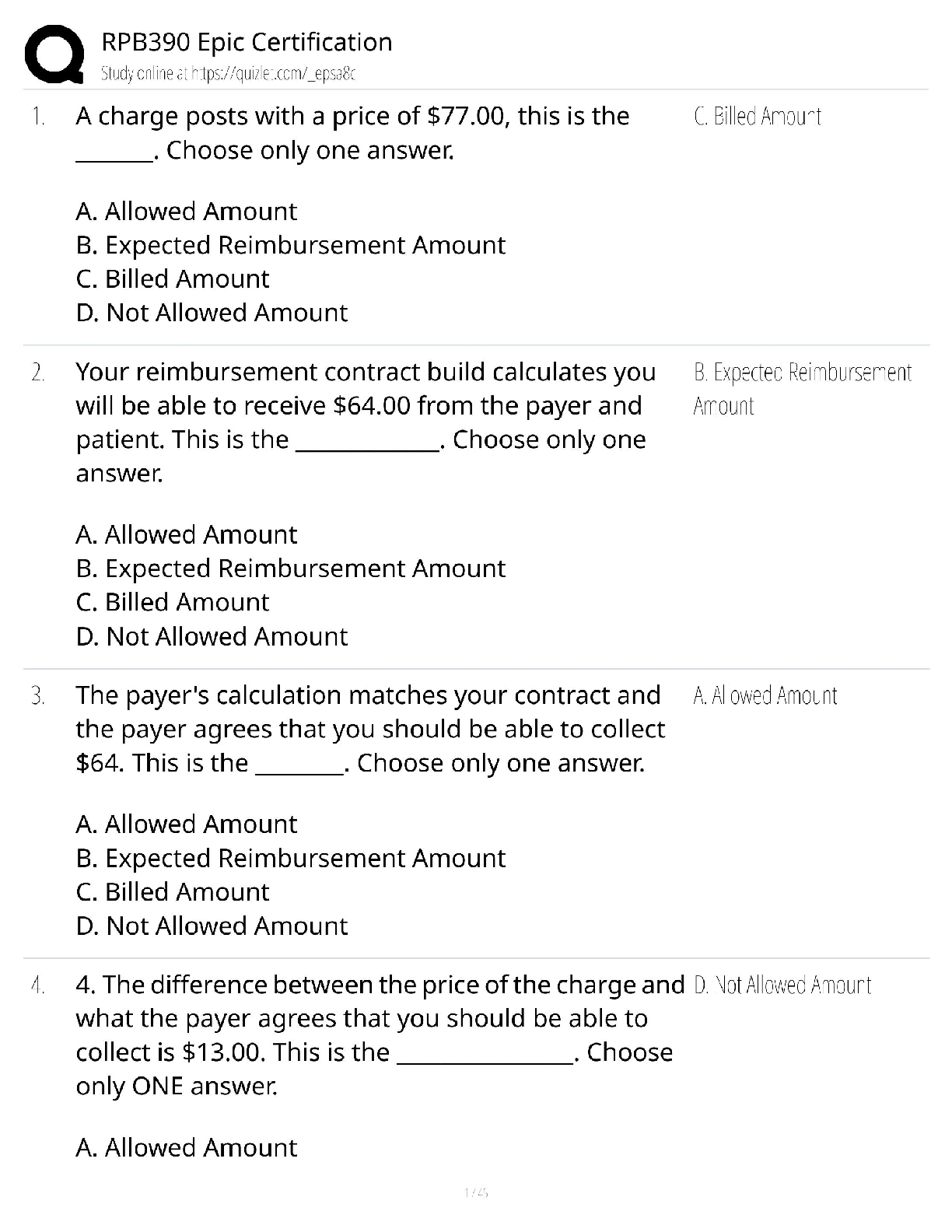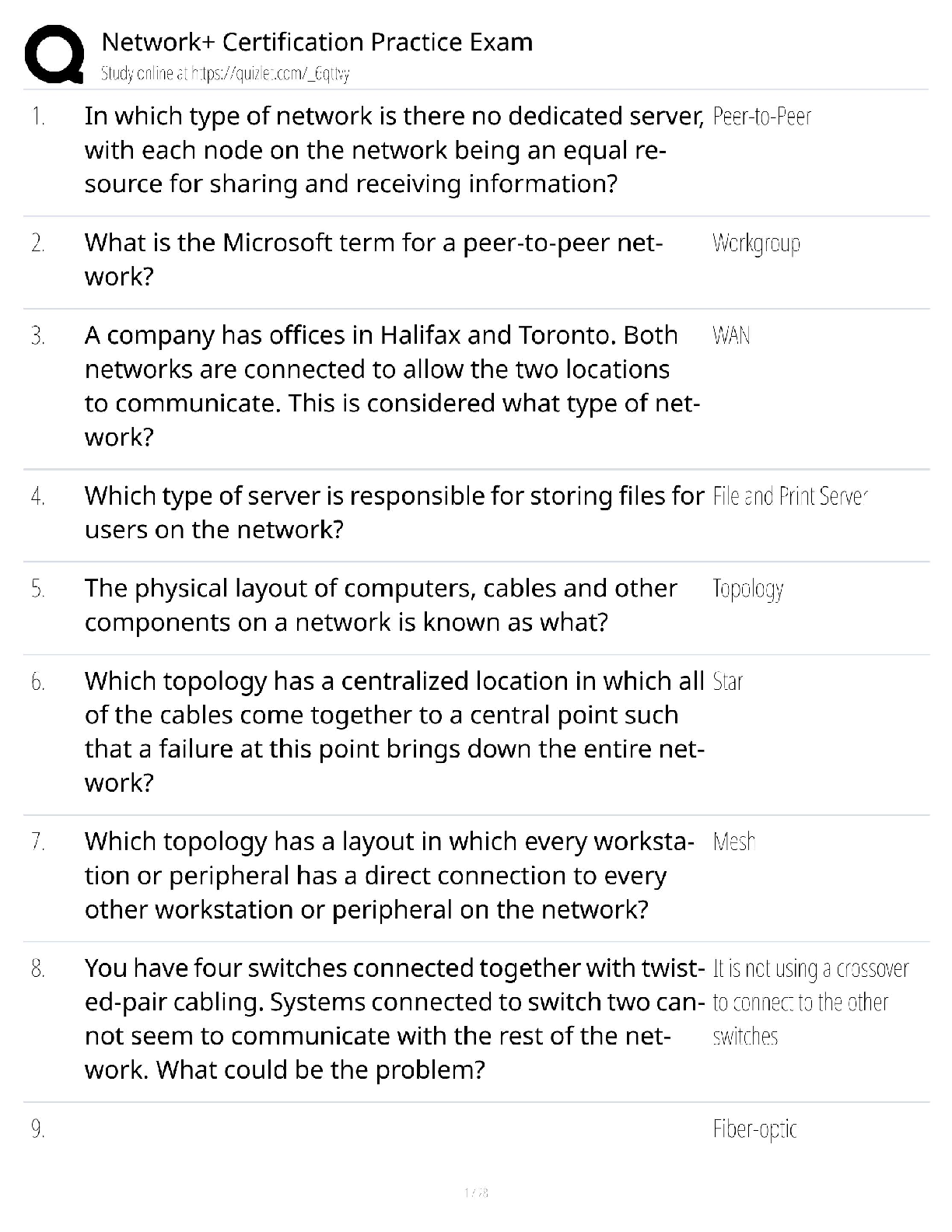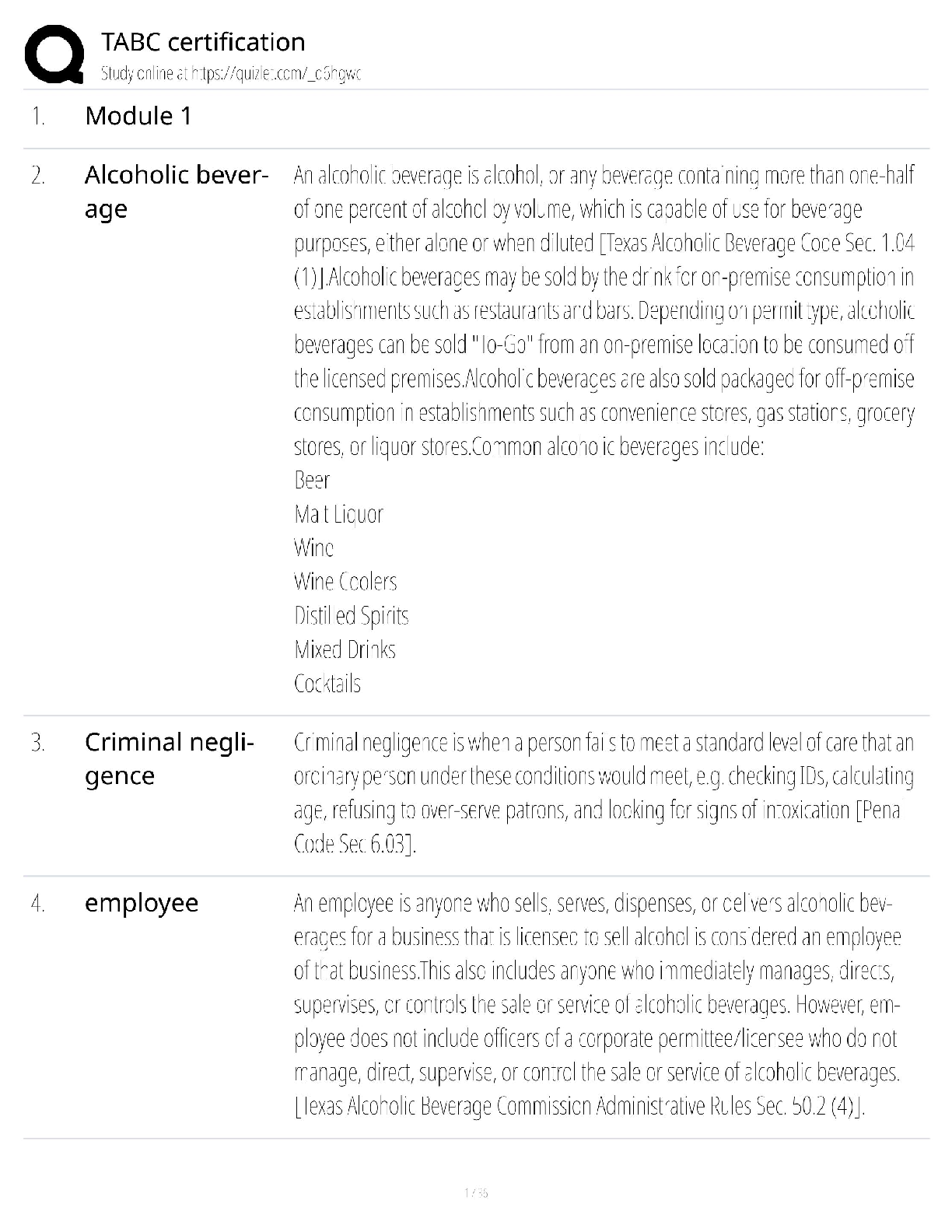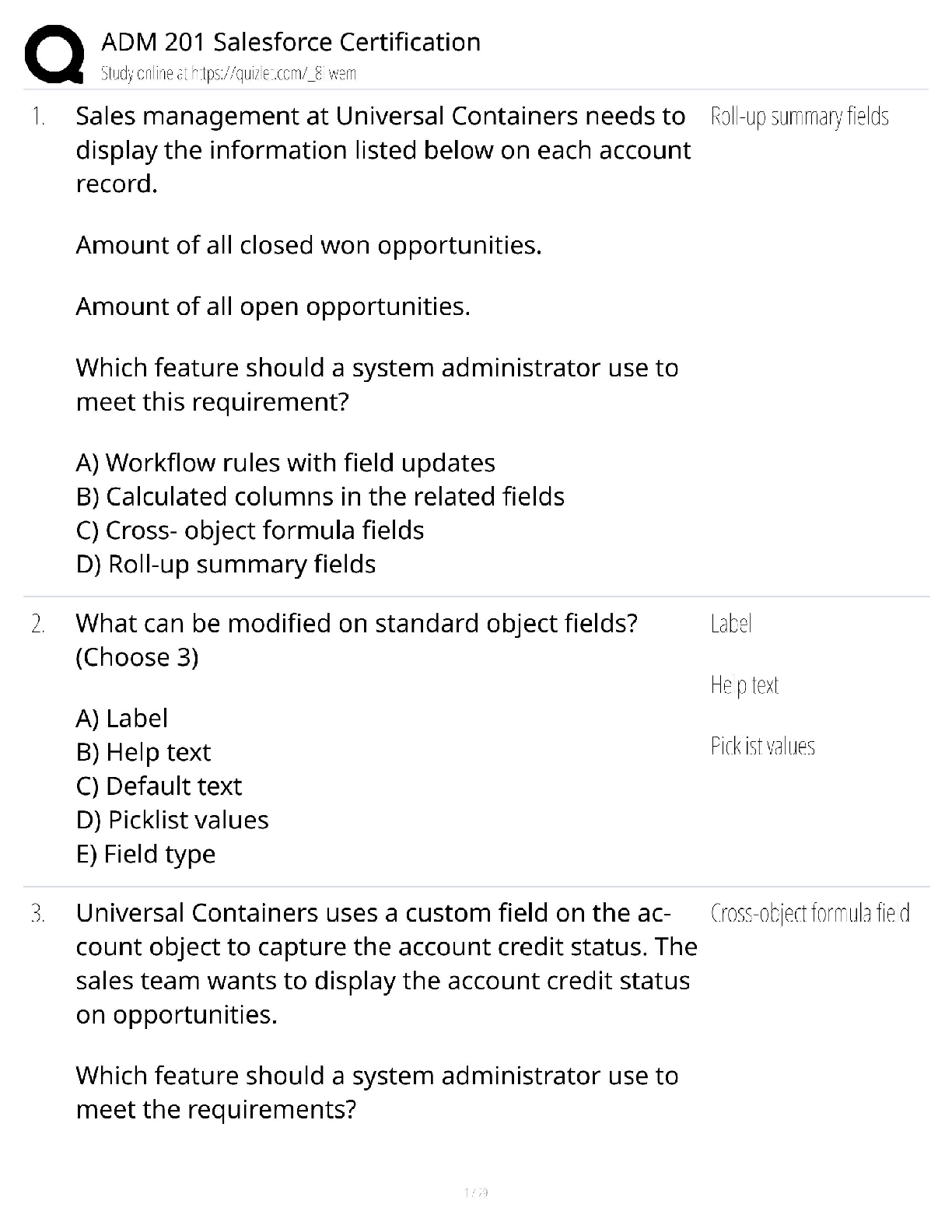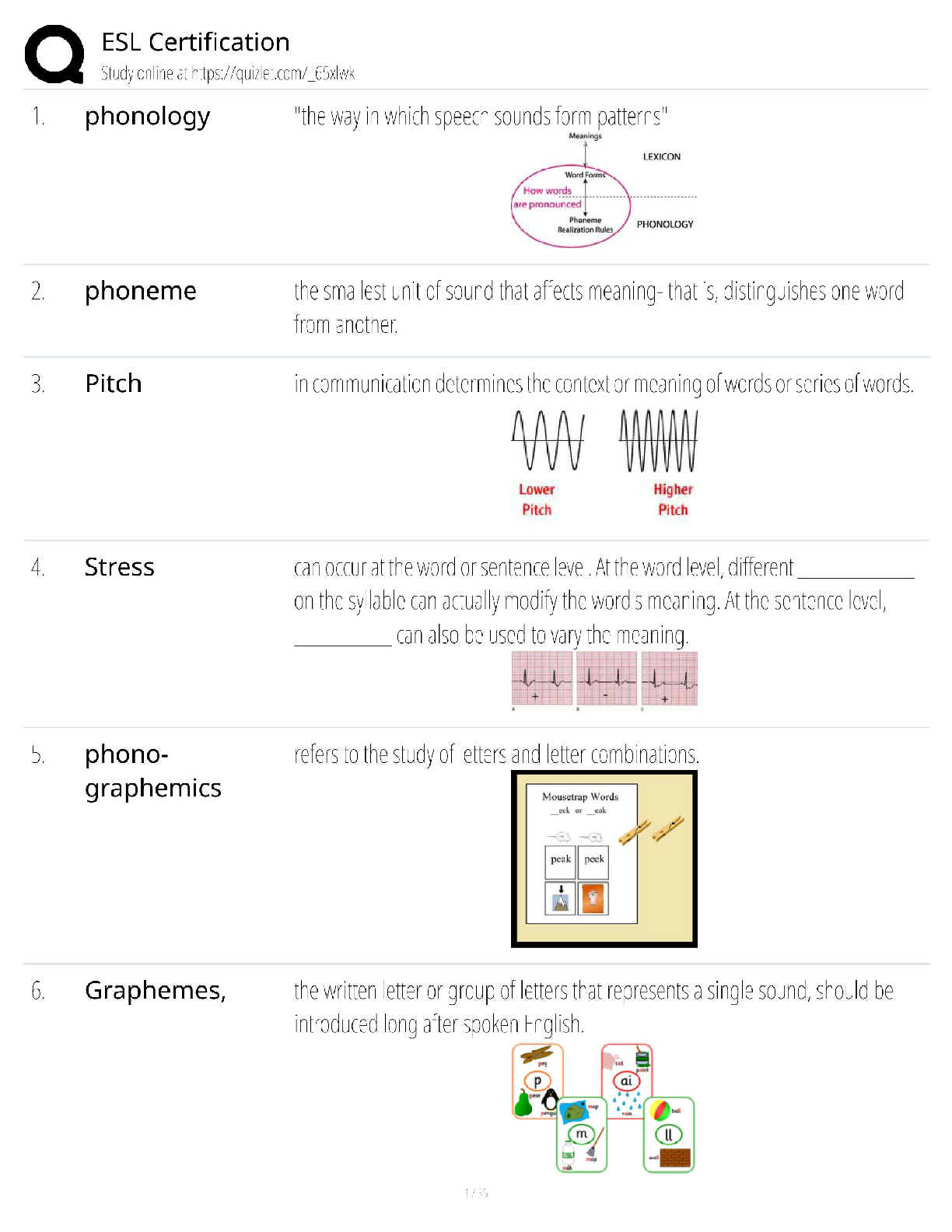Psychology > QUESTIONS & ANSWERS > PSY 470 Abnormal Psychology Quiz 2 With All Correct Answers (ALREADY GRADED A) (All)
PSY 470 Abnormal Psychology Quiz 2 With All Correct Answers (ALREADY GRADED A)
Document Content and Description Below
PSY 470 Abnormal Psychology Quiz 2 Quiz 2 Instructions: Answer all questions on the scantrons provided to you. If you were absent, complete the quiz and transfer to the scantron by the end of Tuesday� ... ��s class. Turn in all completed scantrons by end of class on Tuesday. 1. A person with _____ experiences wide-ranging and persistent feelings of worry and anxiety. a. generalized anxiety disorder b. specific phobia c. social anxiety disorder d. obsessive-compulsive disorder 2. The inaccurate and inappropriate beliefs held by people with various psychological problems are called: a. existential anxiety. b. irrational assumptions. c. moral anxiety. d. conditions of worth. 3. A diagnostic criterion for posttraumatic stress disorder is the presence of significant distress or impairment for: a. up to three weeks. b. more than one month. c. more than six months. d. more than one year. 4. Which test is a personality inventory? a. Draw-a-Person b. MMPI-2 c. Rorschach d. TAT 5. Using the criteria listed in DSM-5, Dr. Ross and Dr. Carman agree that Chloe is experiencing posttraumatic stress disorder. This is an example of: a. reliability. b. generalizability. c. external validity. d. internal validity. 6. A professor who puts on rubber gloves before grading papers and faithfully avoids any contact with the hands of students is exhibiting a(n): a. cleaning compulsion. b. checking compulsion. c. order compulsion. d. touching compulsion. 7. A person experiencing multiple personalities would MOST accurately be diagnosed with dissociative: a. schizophrenia. b. identity disorder. c. fugue. d. amnesia. 8. If a person had his brain waves recorded to measure electrical activity, he MOST likely had a(n): a. positron emission tomography (PET) scan. b. magnetic resonance imaging (MRI) scan. c. computerized axial tomography (CAT) scan. d. electroencephalogram (EEG). 9. A(n) _____ inventory asks about how one would act with others in a variety of situations. a. cognitive b. affective c. social skills d. functional 10. According to Freud, a generalized anxiety disorder is MOST likely to result when: a. a person does not dream, and thus has no outlet for anxiety. b. defense mechanisms are too weak to cope with anxiety. c. a person never has a chance to experience trauma. d. defense mechanisms are too strong. 11. Compared with men, women are _____ to develop generalized anxiety disorder. a. equally likely b. about half as likely c. twice as likely d. not at all likely 12. People who are unable to recall important information about themselves, especially of an upsetting nature, are MOST likely experiencing: a. dissociative identity disorder. b. dissociative amnesia. c. body dysmorphic disorder. d. depersonalization-derealization disorder. 13. Persistent thoughts, ideas, impulses, or images that seem to invade a person's consciousness are called: a. obsessions. b. compulsions. c. panic attacks. d. phobias. 14. Which medications work primarily by enhancing the effectiveness of GABA? a. Antidepressants b. Antipsychotics c. Immunosuppressants d. Benzodiazepines 15. A panel of psychologists and psychiatrists evaluates the test results and clinical interviews of a client in a sanity hearing. They all arrive at the same diagnosis. The panel has high: a. internal validity. b. predictive validity. c. interrater reliability. d. test–retest reliability. 16. Compared with the original DSM, which was published in 1952, DSM-5 has: a. more than five times as many diagnostic categories. b. approximately twice as many diagnostic categories. c. slightly more diagnostic categories. d. slightly fewer diagnostic categories. 17. Which of the following is NOT true regarding specific phobias? a. Many people have more than one phobia at a time. b. Repeated exposure to the object causes a gradual fear response. c. Women are more likely to have a specific phobia compared to men. d. People make elaborate efforts to avoid specific phobias. 18. "Your worries are only thoughts. Don't try to stop them! Recognize that they're thoughts, and don't let them upset you so much." This statement MOST likely would come from someone using which form of therapy for generalized anxiety disorder? a. Rational-emotive therapy b. Mindfulness-based cognitive therapy c. Intolerance of uncertainty therapy d. Biofeedback 19. The test that reports the person's results on clinical scales such as "hypochondriasis" and "Psychopathic deviate" is the: a. sentence-completion test. b. Thematic Apperception Test. c. Bender Visual-Motor Gestalt Test. d. Minnesota Multiphasic Personality Inventory. 20. When he was 5 years old, Sunil was almost struck by lightning while walking through a forest during a rainstorm. Today, he is extremely afraid of trees. A behaviorist would say that he has acquired this fear by: a. operant conditioning. b. modeling and imitation. c. classical conditioning. d. stimulus generalization. 21. Some studies have reported that 5 to 10 percent of patients with psychological disorders get worse after starting treatment. From this finding, one can conclude that: a. a small percentage of patients cannot be helped with treatment. b. treatment causes additional symptoms in some clients. c. not all treatments are equally effective in all clients. d. a small percentage of clinicians are not adequately trained to treat clients. 22. How do results from evoked potential studies support the idea of the existence of multiple personalities? a. Evoked potentials can be elicited iatrogenically by therapists. b. Different subpersonalities have been found to show different brain wave patterns. c. Nonpatients are able to fake results just like those diagnosed with multiple personalities. d. Only those with traumatic backgrounds produce evoked potentials. 23. A client factor that helps result in positive treatment outcome is: a. educational attainment. b. income level. c. high motivation. d. discipline. 24. Drew is terrified of the snakes that his 8-year-old son brings home as pets. During his therapy, his therapist demonstrated how to handle them. This is a form of therapy based on: a. flooding. b. modeling. c. implosive techniques. d. covert desensitization. 25. A friend says, "If we could just eliminate combat traumas, we could eliminate a great deal of posttraumatic stress disorder." The BEST response is: a. "Yes. In fact, combat trauma is the leading source of PTSD worldwide." b. "Yes. Combat trauma produces as many cases of PTSD worldwide as civilian trauma does." c. "Yes. However, civilian trauma causes many more cases of PTSD than combat trauma does." d. "Maybe. However, many researchers think that combat trauma is significantly overrated as a source of PTSD. [Show More]
Last updated: 3 years ago
Preview 1 out of 5 pages
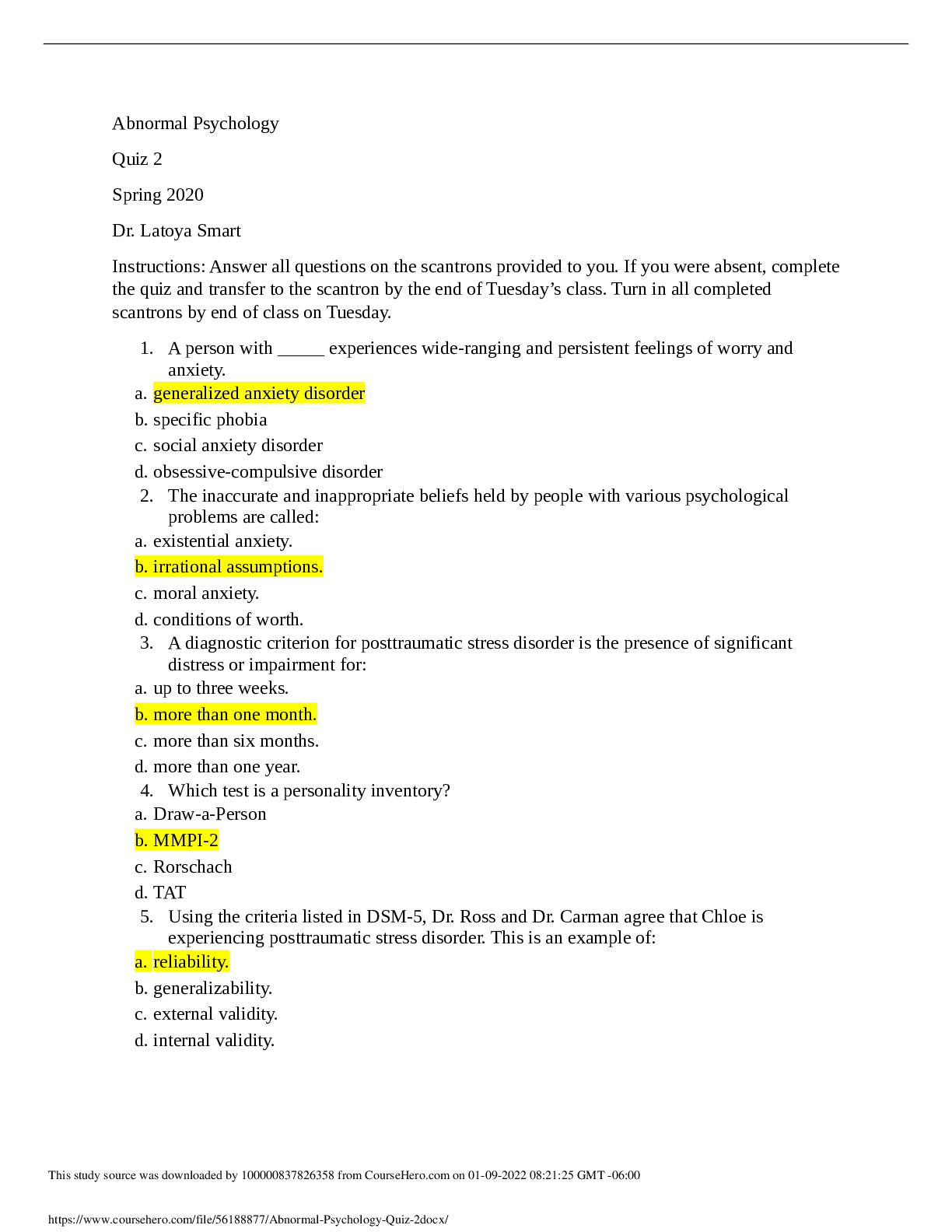
Buy this document to get the full access instantly
Instant Download Access after purchase
Buy NowInstant download
We Accept:

Reviews( 0 )
$10.00
Can't find what you want? Try our AI powered Search
Document information
Connected school, study & course
About the document
Uploaded On
Jan 09, 2022
Number of pages
5
Written in
All
Additional information
This document has been written for:
Uploaded
Jan 09, 2022
Downloads
0
Views
169

